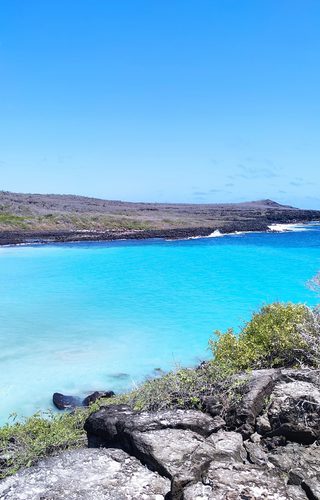A month-by-month guide of when to visit the Galapagos Islands.
When planning a trip to the Galapagos Islands, choosing the best time to visit is crucial for a memorable and rewarding experience.
Weather conditions should also be taken into account when deciding the best time to visit the Galapagos Islands. The dry season, from June to November, brings cooler temperatures and occasional drizzles, but it also offers calmer seas and clearer skies. These conditions are ideal for those prone to motion sickness and for photographers seeking crisp landscapes and vibrant wildlife shots.
Conversely, the warm and wet season, from December to May, brings higher temperatures and occasional rain showers. Although this season offers more lush vegetation and greater marine activity, it's important to note that sea conditions can be rougher during this time.
Wildlife enthusiasts who want to prioritize animal encounters and are flexible with weather conditions should consider visiting during the warm season. However, those seeking calmer seas and more temperate weather might prefer the dry season.
Wildlife is at the heart of any Galapagos journey, and the islands offer year-round opportunities to witness captivating species. However, the timing of your visit can affect the diversity and abundance of the wildlife you may encounter.
For those eager to observe the famous Galapagos tortoises nesting, the warm and wet season between December and June is ideal. This period also coincides with the mating season of sea lions and the arrival of numerous migratory bird species.
To witness avian courtship rituals, such as the famous blue-footed boobies' elaborate dance, plan your visit between May and July. Additionally, marine life, such as sea turtles and hammerhead sharks, is more active during the warm season, providing incredible snorkelling and diving experiences.
If you're interested in observing the waved albatrosses, plan your trip between April and December, with peak activity occurring in July. This is when these magnificent birds return to Española Island for nesting and breeding, which is a remarkable spectacle.
Ultimately, the best time to visit the Galapagos Islands depends on your preferences and interests. Consider the specific wildlife you wish to observe, your tolerance for varying weather conditions, and the activities you hope to engage in, such as snorkelling, hiking, or photography.
No matter when you choose to visit, the Galapagos Islands promise a captivating and unforgettable experience. Their unique ecosystem, abundant wildlife, and extraordinary landscapes ensure that every moment spent exploring this remarkable archipelago will be truly extraordinary.
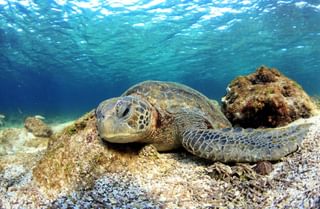
January
January is part of the warm and wet season in the Galapagos Islands. The ocean waters are at their warmest, making it an excellent time for snorkelling and diving. Sea turtle mating season begins, and green sea turtles can be seen nesting on beaches. Land bird species, such as finches and warblers, are actively courting and nesting.
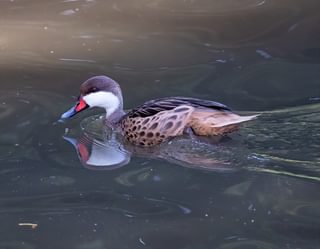
February
February brings peak rainfall and high humidity to the islands. It is an important breeding season for pintail ducks, and you may see flamingos and Galapagos doves nesting. Green sea turtles continue nesting, and the arrival of waved albatrosses on Española Island marks the start of their mating rituals.
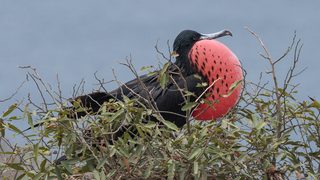
March
March still sees occasional rainfall, but temperatures begin to gradually decrease. Land bird breeding activities are in full swing, with lively displays from frigatebirds as the males inflate their red throat sacs. Marine life is abundant, with sea lion pups playing in the water, and snorkellers can encounter playful sea lion colonies.
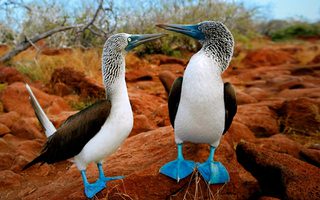
April
April marks the end of the warm season, and temperatures start to cool down. The waved albatrosses on Española Island perform their intricate courtship dances, a highlight for bird enthusiasts. Similarly, you can witness the fascinating courtship displays of blue-footed boobies, and frigatebird mating season continues. This is a great time for hikers, as the landscapes are lush and green.
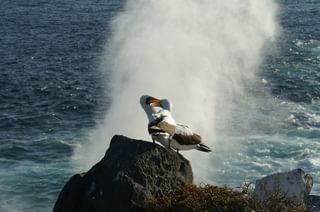
May
May is an excellent month to visit for birdwatching enthusiasts. The waved albatrosses on Española Island continue their courtship rituals, while other bird species, such as Galapagos penguins and flightless cormorants, are more active. Marine life thrives, and snorkelling or diving may allow encounters with sea lions and various fish species.
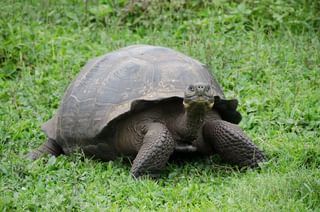
June
June marks the beginning of the dry season in the Galapagos Islands. The weather becomes cooler, and the sea is calmer, providing optimal conditions for cruising and water activities. Giant tortoises start to migrate to lower elevations for nesting, and bird colonies are bustling with activity.
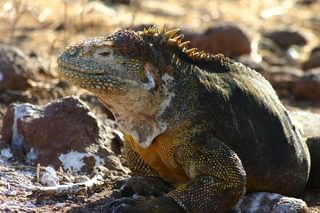
July
July is a peak month for wildlife sightings in the Galapagos Islands. The iconic giant tortoises can be spotted in the wild as they continue nesting and searching for food. Marine life thrives, with snorkelers and divers encountering sea turtles, sharks, rays, and colourful reef fish. It's also a great time to witness the hatching of blue-footed boobies and frigatebirds.

August
August brings cooler temperatures and offers excellent opportunities for hiking and exploring the islands' unique landscapes. The giant tortoises are still nesting, and you can witness their fascinating behaviour. Marine life is abundant, and snorkellers may come across sea lions, Galapagos penguins, and marine iguanas.
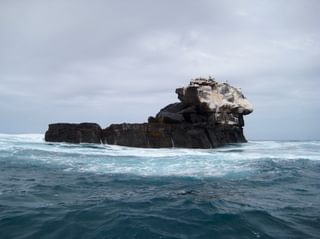
September
September marks the beginning of the garúa season, characterized by cool temperatures, overcast skies, and occasional light drizzles. Most sea birds are nesting, so a great time to come and watch them. Sea lion pups are usually seen in larger number around this time, but they are still too small to swim on their own.
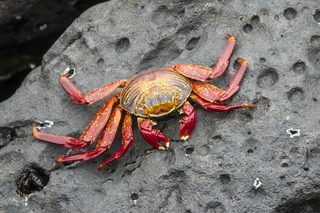
October
October is still part of the garúa season, with cooler temperatures and occasional drizzles. The islands are lush and green, offering stunning landscapes. Land bird species continue breeding, and young chicks, in particular blue-footed booby chicks, can be spotted. Diving conditions are excellent, with clear waters and abundant marine life.
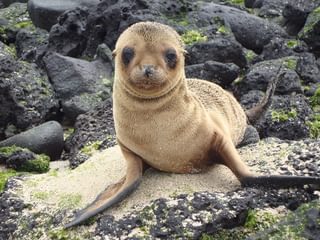
November
November marks the transition from the garúa season to the warm season. The weather starts to warm up, and occasional showers are common. Sea lion pups are playful and curious, offering delightful encounters. Green sea turtles continue nesting, and snorkelling unveils a vibrant underwater world. This is perhaps the best time to try and snorkel with sea lion pups.

December
December ushers in the warm and wet season in the Galapagos Islands. The islands receive more rainfall, and the temperatures are higher. This is your chance to try and spot the waved albatross chicks as they learn to fly and leave the islands until March. This is the beginning of green sea turtle nesting season, so female turtles will be on the shoreline, and the end of sea lion mating season, so there is still a chance to see sea lion pups swimming in the oceans.
Chat to a Galapagos expert
Start planning your Galapagos holiday today

Amanda
Travel Expert































